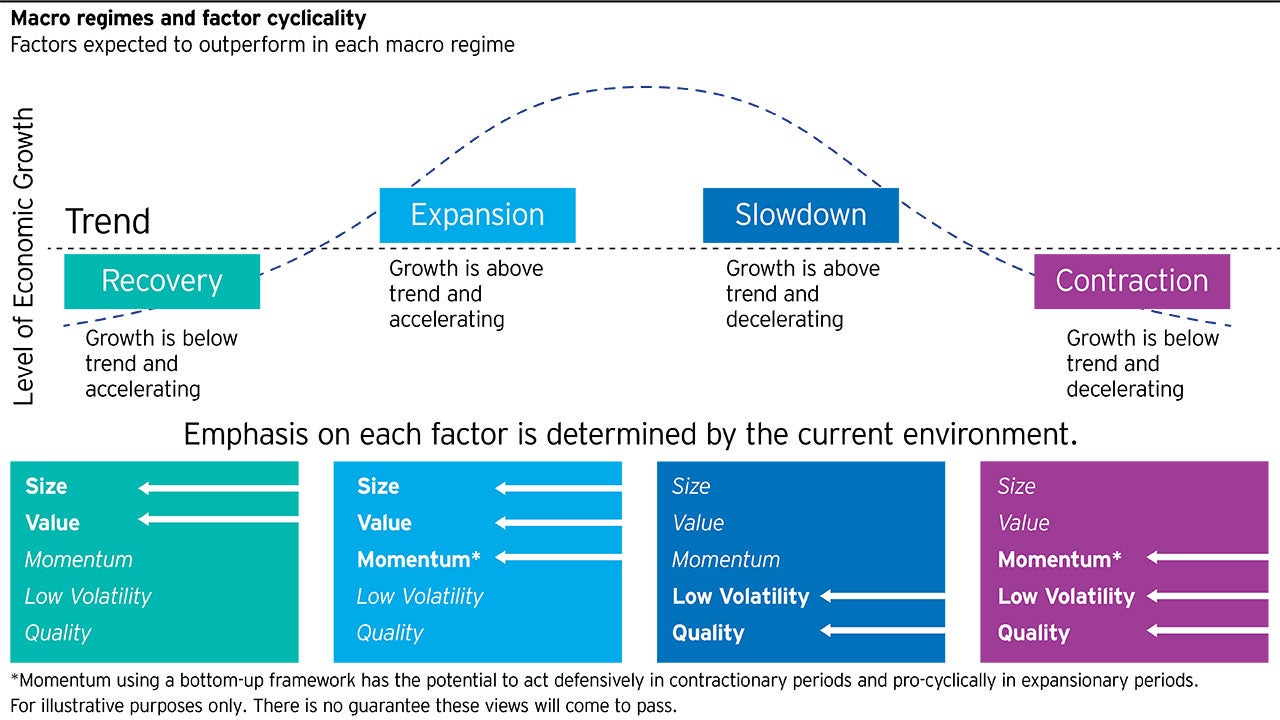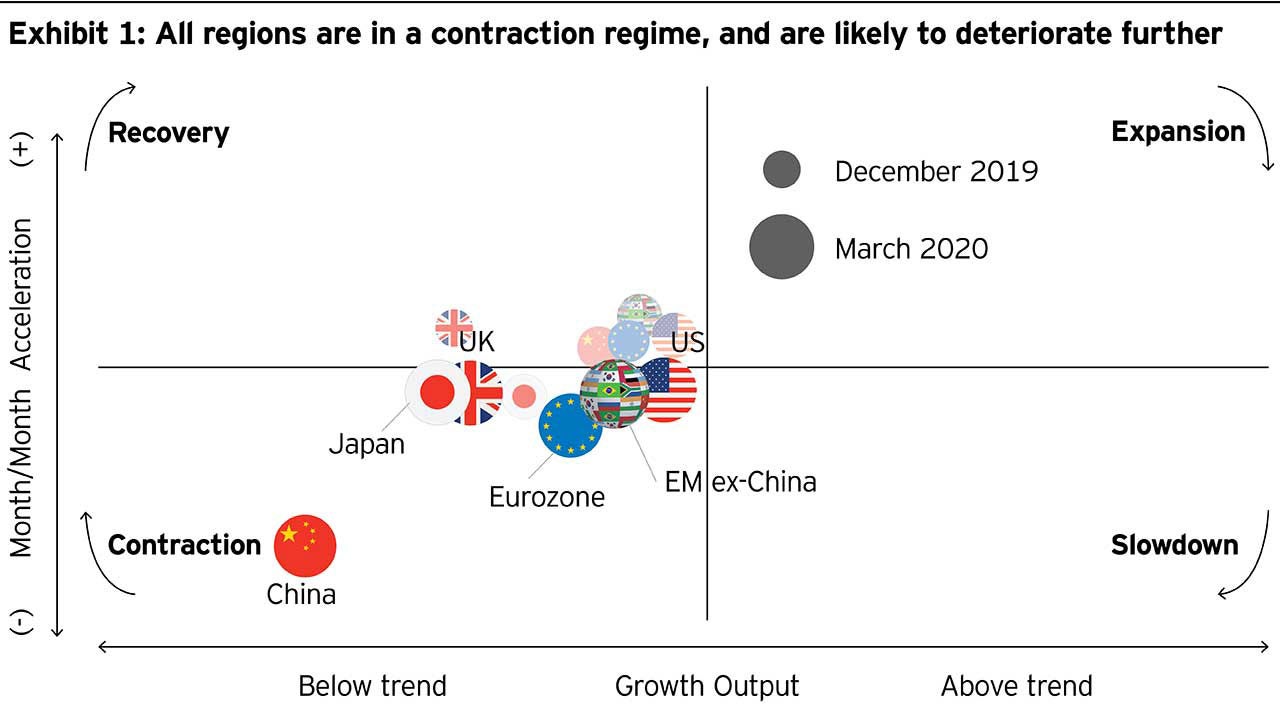
Fixed Income East meets East: Economic links between the Middle East and China
Middle Eastern economies are on an Economic Diversification 2.0 path and we believe China fits right into their new economic growth model.

Factor portfolios based on quantitative characteristics such as value, momentum, quality, size and low volatility have historically generated attractive excess returns, outperforming market cap benchmarks on a risk-adjusted basis.
While single factors have outperformed over the long-term, they have also experienced strong cyclicality, occasionally leading to extended periods of underperformance driven by changing market environments.

We believe investors can exploit these distinct macro sensitivities among factors, developing dynamic rotation strategies driven by forward-looking macro regime frameworks, with the potential to outperform static multifactor portfolios while maintaining diversification to multiple factors.
Driven by the shock of Covid-19, our macro framework moved into a global contraction regime in February (i.e. global growth expected to be below trend and decelerate). This regime remains in place for April and is broad-based across regions.
We are actively monitoring for a turnaround in market-implied growth expectations, as asset prices should discount the positive impulse from extraordinary fiscal and monetary policy ahead of the economic data. Credit assets are expected to lead the way in a recessionary environment.
Read more in the whitepaper: Short-term investment outlook- April Update

The value of investments and any income will fluctuate (this may partly be the result of exchange rate fluctuations) and investors may not get back the full amount invested.
Factor investing is an investment strategy in which securities are chosen based on certain characteristics and attributes that may explain differences in returns. There can be no assurance that performance will be enhanced or risk will be reduced for portfolios that seek to provide exposure to certain factors. Exposure to such investment factors may detract from performance in some market environments, perhaps for extended periods. Factor investing may underperform cap-weighted benchmarks and increase portfolio risk. There is no guarantee that low-volatility stocks will provide low volatility. Investing in securities of small capitalization companies involves greater risk than customarily associated with investing in larger, more established companies. A value style of investing is subject to the risk that the valuations never improve or that the returns will trail other styles of investing or the overall stock markets. Momentum style of investing is subject to the risk that the securities may be more volatile than the market as a whole or returns on securities that have previously exhibited price momentum are less than returns on other styles of investing.
The opinions expressed are those of the authors, are based on current market conditions and are subject to change without notice. These opinions may differ from those of other Invesco investment professionals.

Middle Eastern economies are on an Economic Diversification 2.0 path and we believe China fits right into their new economic growth model.

With inflation on the rise it’s about time to dust off the inflation playbook. We investigate the impact inflation has had on the Value, Momentum and Quality factors historically and how investors may want to approach their factor exposures.

Equities provide a return for bearing investment risk over the long term. The question for an investor is, how to identify stocks with the best return potential given their inherent investment risks.